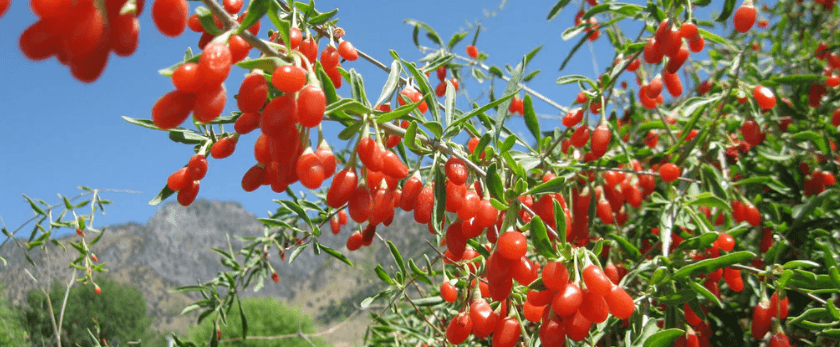Goji berries, also known as wolfberries, are a superfood that has gained popularity in recent years due to their numerous health benefits. These bright red berries are packed with antioxidants, vitamins, and minerals, making them a valuable addition to any diet. But did you know that you can also grow your own goji berries at home? Not only is it a fun and rewarding experience, but it also allows you to have a fresh supply of these nutritious berries right at your fingertips. In this article, we'll discuss how to grow goji berries and provide you with all the information you need to get started.
What are Goji Berries?
Goji berries are the fruit of the Lycium barbarum plant, which is native to China. They have been used in traditional Chinese medicine for centuries and are believed to have anti-aging and immune-boosting properties. Goji berries are small, bright red berries that grow on a deciduous shrub that can reach up to 10 feet in height. The plant produces delicate purple flowers in the summer, which then turn into the juicy, nutrient-rich berries in the fall.
How to Care for Goji Berries
Watering
Goji berries are drought-resistant plants, but they still require regular watering to thrive. The key is to keep the soil consistently moist, but not waterlogged. Water your goji berry plant deeply once or twice a week, depending on the weather and soil conditions. During hot and dry periods, you may need to water more frequently. It's best to water in the morning to allow the plant to absorb the moisture before the heat of the day.
Light
Goji berries prefer full sun, but they can also tolerate partial shade. If you're growing them in a container, make sure to place it in a spot that receives at least 6-8 hours of sunlight per day. If you're planting them in the ground, choose a location that gets plenty of sun, but also has some protection from strong winds.
Soil
Goji berries can grow in a variety of soil types, but they prefer well-draining, slightly acidic soil with a pH of 6.0-6.8. If your soil is too alkaline, you can add some peat moss or compost to lower the pH. It's also a good idea to mix in some organic matter, such as compost or aged manure, to improve the soil's fertility and texture.
Fertilizer
Goji berries are light feeders and don't require much fertilizer. However, if you want to give your plants a boost, you can apply a balanced fertilizer, such as a 10-10-10, in the spring. Avoid using high-nitrogen fertilizers, as they can promote leaf growth at the expense of fruit production.
Pruning
Pruning is an essential part of caring for goji berries. It helps to keep the plant healthy, promotes fruit production, and maintains its shape and size. Prune your goji berry plant in late winter or early spring before new growth appears. Remove any dead, damaged, or diseased branches, as well as any crossing or crowded branches. You can also prune to shape the plant and encourage new growth.

What is the Best Time to Grow Goji Berries?
The best time to grow goji berries is in the spring, after the last frost has passed. You can start with either seeds or seedlings, but seedlings are a more reliable option as they are already established and will produce fruit sooner. If you're starting from seeds, it's best to start them indoors 6-8 weeks before the last frost and then transplant them outside once the weather warms up.
Common Problems with Goji Berries
While goji berries are relatively easy to grow, they can still face some common problems. Here are a few issues you may encounter and how to deal with them:
- Pests: Goji berries are generally pest-resistant, but they can occasionally be attacked by aphids, spider mites, or whiteflies. You can use insecticidal soap or neem oil to control these pests.
- Diseases: Goji berries are also relatively disease-resistant, but they can be susceptible to root rot if the soil is too wet. Make sure to provide good drainage and avoid overwatering.
- Birds: Birds love goji berries, and they may eat them before you get a chance to harvest them. You can protect your plants by covering them with netting or using scare tactics, such as hanging shiny objects or playing recordings of bird distress calls.
Conclusion
Growing goji berries is a fun and rewarding experience that allows you to have a fresh supply of these nutritious berries right in your backyard. By following the care tips mentioned in this article, you can successfully grow your own goji berry plant and enjoy its delicious and healthful fruits. Remember to be patient, as it may take a year or two for your plant to start producing berries. But with proper care and maintenance, you'll soon have a bountiful harvest of these super berries. Happy growing!










